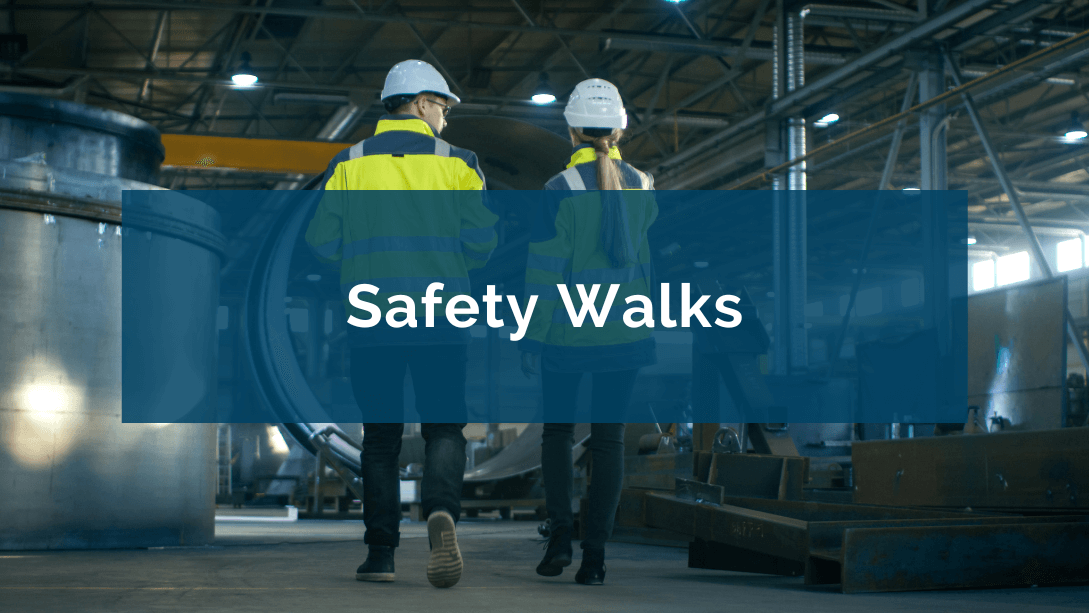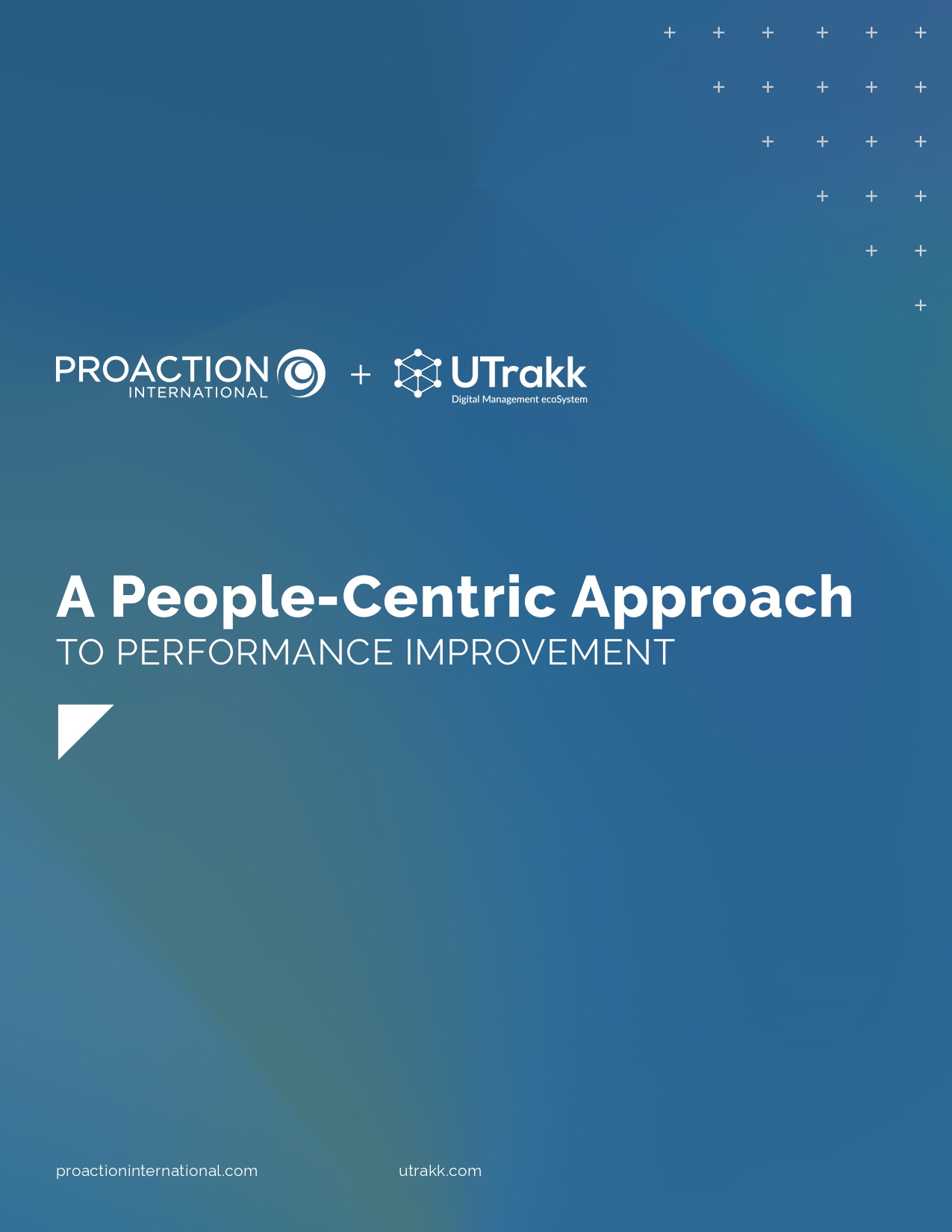What are safety walks?
A safety walk (or safety round) is a structured floor observation integrated into daily operations. It involves visiting production sites to identify potential hazards, observe employee behaviors, spot deviations, and, more importantly, establish a dialogue around prevention with teams. The purpose of safety walks is not to punish but to improve health and safety performance in industrial and manufacturing environments.
Conducting safety walks fosters a shared safety culture, where each employee (operator, technician, manager) takes responsibility for their safety and their colleagues’. It promotes both individual and collective accountability.
Safety walks, audits, and inspections
Safety rounds, audits, and inspections play complementary roles in managing workplace health and safety (WHS).
-
A safety walk is a regular, proactive approach included into daily operations. It allows managers to observe behaviors, talk with employees, and reinforce the WHS culture on the floor.
-
A safety audit is a formal, occasional process, typically conducted from a strategic or regulatory perspective, to evaluate the effectiveness of the safety management system.
-
A safety inspection has a regulatory purpose: it’s used to verify compliance with legal obligations related to WHS. It can be carried out by a labor inspector, an external provider, or the employer.
Who’s involved in safety walks?
Effective safety rounds are built on a shared mindset. The more this mindset is embraced across different levels of the organization, the more legitimate and impactful it becomes. Involving multiple stakeholders also helps to bring in diverse perspectives, avoid tunnel vision, and strengthen overall engagement toward safety initiatives.
Frontline managers
Supervisors, team leaders, foremen, or frontline managers are often the best people to conduct safety walks as they have deep knowledge of processes, operational challenges, and appropriate behaviors. They can quickly detect anomalies, non-compliances, or, conversely, best practices observed.
Their on-site presence also has a powerful symbolic impact – by taking the time to observe, listen, and discuss safety issues, they show employees that safety is a top priority for the organization. This act of leadership lends credibility to the company’s message around health and safety, and fosters trust.
WHS committee members
In some organizations, safety walks are also conducted (or co-conducted) by members of the health and safety committee, sometimes in collaboration with management representatives.
This collaborative, interfunctional work allows for a diversity of perspectives (production, HR, prevention, union, etc.) to trigger innovative solutions, facilitates group discussions on potential improvements, and helps make safety a shared value throughout the company.
WHS prevention officers and consultants
In more complex organizations, health and safety managers, supervisors, or other safety professionals can support safety walks to ensure compliance. Their role is to:
-
Train teams on floor observation practices.
-
Help develop relevant safety walk checklists.
-
Support the analysis of the information captured.
These experts ensure that the process remains consistent and uniformly applied, while staying relevant to the realities of the floor.
Why safety walks are important
The importance of safety walks goes far beyond prevention: they are a concrete strategy for protecting workers, ensuring compliance, and increasing the overall performance of the organization.
Reduce accidents and potential hazards
Some safety issues, even discreet, can have significant consequences. Causes can be as simple as a piece of equipment that’s poorly stored or a careless mistake on a construction site.
By quickly identifying potential safety hazards and unsafe behaviors, safety walks focus on early detection and prompt action, preventing irreparable damage before it occurs.
Strengthen the company’s safety culture
More than just a routine, safety walks are a powerful tool for raising safety awareness and strengthening safety measures. It creates an environment where workplace safety is a natural part of routines and becomes a daily responsibility of all employees.
Meet regulations and avoid legal risks
WHS laws impose an obligation on employers to take safety measures, and safety walks demonstrate compliance with such safety regulations. They document guidelines, demonstrate how specific actions have been implemented, and reduce legal risks in the event of an accident.
Reduce costs related to work stoppages
Each accident represents several days of lost time, emergency replacements, temporary disruption, or even repair costs. Promoting prevention helps avoid many inconveniences, whether financial, human, or technical.
Continuously improve work conditions
By ensuring ergonomic environments, proper signage, workstation organization, and preventive maintenance, safety walks contribute to better safety conditions. They foster continuous improvement for a more efficient and safer workplace, all while promoting employee well-being, satisfaction, and trust.
Increase overall organizational performance
Health and well-being in the workplace mean reduced absenteeism and higher productivity. By reducing interruptions, accidents, and sources of stress, a safe environment drives operational stability, employee engagement, and daily supply chain productivity, resulting in increased organizational performance.
How to implement effective safety walks

1. Define clear objectives
To better guide your approach, you need a clear framework. First, define what goals you’re trying to achieve:
-
Reduce incidents and potential risks?
-
Structure prevention activities?
-
Empower managers?
-
Strengthen employee buy-in?
2. Identify areas and activities to monitor
Not all areas of the organization have the same level of risk. Start by identifying:
-
High-risk areas (moving machinery, chemicals, traffic areas, loading gates).
-
Critical activities (maintenance, handling, shift changes).
-
Infrequently visited areas (storage or warehousing facilities).
This clear risk assessment will help ensure consistent and strategic coverage.
3. Create a safety checklist
A safety checklist is the most important tool of the safety walk process. It guides the manager throughout their floor tour and ensures that all critical control points are covered.
A good checklist is to-the-point and relevant to the realities of the floor, supporting an effective visual inspection of the work environment. Pre-defined questions can be sorted by area, by type of risk, or by process, depending on the company's priorities and needs. The safety checklist should help the manager actively observe various aspects related to safety matters.
Integrate your checklists with UTrakk:
UTrakk Daily Management System (DMS) lets you create customized and standardized checklists including safety control points to monitor for each area or workstation. Observations and results are centralized and stored, enabling targeted and continuous monitoring of safety measures.
The solution provides features such as:
-
Easy creation, personalization, and update of checklists.
-
Digital lists that allow to answer questions, and add photos and important details through interactive functions, during safety tours.
-
Report generation to facilitate the communication of results during daily management meetings and WHS committees.
-
Analysis of workplace health and safety trends through detailed dashboards.
4. Determine the frequency of safety walks
While conducting safety walks once a year makes the process useless, performing them too frequently can bore teams. Here, the key is regularity. It’s essential to find the appropriate frequency, based on:
-
The level of risk for each area or workstation.
-
The time dedicated to WHS matters in daily activities.
A typical frequency in industrial and manufacturing environments is one or two weekly rounds per manager, alternating between different positions or shifts.
5. Train managers
An effective safety walk relies on the sharp eyes and attitude of the people conducting it. So it’s critical to help managers develop safe behaviors and practices, and embody a safety culture for their teams.
Managers need to develop capabilities such as:
-
Observing rigorously and objectively.
-
Engaging in non-judgmental dialogue with employees.
-
Accurately documenting what’s observed.
A training course on the principles of safe observation, interpretation biases, safety protocols, and nonviolent communication is a great investment to ensure the effectiveness of safety walks.
6. Integrate safety walks into management routines
To last over the long-term, safety walks must be an integral part of daily management routines. This involves:
-
Planning regular safety walks in managers' schedules.
-
Linking them to other management routines (meetings, committees, Gemba Walks).
-
Considering workplace safety with the same attention and rigor as other key performance areas.
When safety rounds become part of everyday work life, they gain stronger support at every level of the organization. Ultimately, this helps ensure strong protection of workers’ health and safety – because people come first.
Make safety walks part of your daily routine with UTrakk:
The UTrakk solution makes it easy to plan and manage effective, consistent safety walks. Integrated into managers' schedules as a routine task, these Gemba Walks reinforce managerial presence on the floor and establish regular dialogue between teams and managers on safety issues.
UTrakk includes features such as:
-
Structured and regular safety walks planned as part of managers’ standard daily activities.
-
Digital checklists enabling managers to verify all critical points – emergency exits, personal protective equipment, physical hazards, hazardous materials, etc. – directly from a mobile device during floor tours.
-
Real-time assignment of corrective actions to responsible individuals, with clear deadlines, to quickly act on identified hazards.
-
Integration of dedicated safety dashboards in the floor tour interface for easy monitoring.
7. Collect information and ensure close tracking
All identified hazards must be:
-
Properly recorded and categorized (by risk type, severity, area).
-
Traceable in a WHS management system to facilitate analysis and management.
The goal is to create a dashboard integrated with a database to help teams track deviations, implement corrective actions, and make data-driven decisions.
Track and improve your safety KPIs with UTrakk:
UTrakk simplifies the creation of personalized dashboards tailored to your key performance indicators (KPIs), supporting proactive WHS management across your organization.
The DMS includes features such as:
-
Manual or automatic data integration.
-
Common charts (bar, pie, etc.), specialized charts (safety cross), and global indicators for clear visualization of KPIs.
-
Interactive filters and intuitive color coding for quick gap identification.
-
Creation of corrective actions from a dashboard.
8. Adjust to improve continuously
Safety walks are an evolving process. In the first few weeks, it helps identify what’s working well (frequency, team adoption) and what’s not (inadequate tools, lack of time).
Later, it’s recommended to conduct regular reviews:
-
Does the safety checklist need to be updated?
-
Does the frequency need to be adjusted?
-
Is the data properly analyzed and used?
By cultivating this feedback loop, the practice stays relevant, useful, and effective. It adapts to the context, matures with the organization, and becomes a driver of operational performance.
Tips for maximizing safety walk efficiency
While a well-designed checklist is key to a successful safety walk, its effectiveness ultimately depends on how it’s conducted.
Here are our top tips for maximizing the benefits:
-
Establish a climate of trust from the outset: The safety walk should not be seen as a punishment, but as an observation and improvement measure with the goal of addressing safety concerns and supporting workers’ health and well-being and health.
-
Note the good practices observed, not just the anomalies: Rather than focusing solely on what's wrong, highlight the safety practices and behaviors observed and provide recognition to encourage repetition and create a positive dynamic.
-
Actively involve employees in the process: The safety round shouldn't be a one-sided situation. Ask questions, inviting employees to discuss their work environment and suggest improvements. This will help you better understand what is actually happening on the floor and find efficient solutions.
-
Ensure consistent follow-up: Each deviation must result in the creation of an action and rigorous follow-up to ensure that the necessary (and vital) correction is implemented in a timely manner.
-
Digitalize the process: To prevent reports from getting lost or management becoming cumbersome, using a digital tool like UTrakk helps organizations efficiently report observations, optimize the inspection process, and analyze accurate data.
Elevate safety for better performance: From prevention to operational excellence
When conducted properly, a safety walk goes beyond a one-time check or a simple regulatory requirement. It becomes a robust operational performance management tool, anchored in daily operations. Through safety rounds, managers can see for themselves how operations are doing directly on the shop floor, communicate with teams, and respond quickly in the event of a problem. They maintain a link with operational reality and help establish a stable, controlled, and safe work environment.
It’s this stability that makes operations run more smoothly, reliably, and efficiently. In industrial and manufacturing environments, managing risks on a daily basis also means managing quality, timelines, and productivity. Safety, therefore, isn’t a secondary concern – it’s a fundamental pillar of any operational excellence approach.
In short, strengthening safety also means reaching new heights of performance and excellence. Conversely, by striving for excellence, companies raise safety standards and, in doing so, place the human factor at the center of their organization. It’s this dual ambition – human and operational – that gives safety walks their power.











